Embark on a journey into the depths of space with stargazing this May 2024. Prepare to witness celestial marvels as asteroid 2 Pallas and Comet 46P/Wirtanen take center stage. Join us as we explore the wonders of the universe unfolding before our eyes.
Would you like to be notified of stargazing events?
List of Meteor Showers in May 2024
- Antihelion Source: Start on December 10; multiple peaks; end September 10.
- η-Aquariids: Start on April 19; peak on May 5; end on May 28.
- η-Lyrids: Start on May 3; peak on May 8; end on May 14.
- τ-Herculids: Start on May 25; peak on May 31; end on June 4.
- Daytime Arietids: Start on May 14; peak on June 7; end on June 24.
We also have a complete list of meteor showers for the entire year of 2024 here.
List of Planetary Conjunctions in May 2024
- Conjunction of the Moon and Saturn in Aquarius on May 3.
- Conjunction of the Moon and Mars in Pisces on May 5.
- Conjunction of the Moon and Mercury in Pisces on May 6.
- Conjunction of Mercury and Eris in Pisces on May 14.
- Conjunction of Mercury and Uranus in Taurus on May 31.
- Conjunction of the Moon and Saturn in Aquarius on May 31.
May 3: Conjunction of the Moon and Saturn
The Moon and Saturn will be at conjunction by sharing the same right ascension and passing within 50′ of each other.
Shortly after, the two bodies will also make a close approach (appulse) reaching 44.7 arcminutes from each other, but no longer sharing the same right ascension.
In some parts Antarctica this distance will be so close as to lead to a lunar occultation of Saturn, meaning the Moon will pass in front of Saturn thereby hiding it from view temporarily.
The two celestial bodies will meet in the constellation of Aquarius with the Moon at apparent magnitude of -10.1 and Saturn at 1.0. The Moon will be a 25 days old waning crescent at 18%.


May 4: Close approach of the Moon and Neptune
The Moon and Neptune will make a close approach (appulse) passing within only 14.5 arcminutes of each other.
In some parts of the world this distance will be so close as to lead to a lunar occultation of Neptune, meaning the Moon will pass in front of Neptune thereby hiding it from view temporarily. If you’re in the eastern coast of Australia, New Zealand, Tasmania and Lord Howe Island, you’re in luck!
Both objects will be in the constellation of Pisces with the Moon being at apparent magnitude -10.7; and Neptune at 7.9. The Moon will be a 26 days old waning crescent at 11%.


May 5: Conjunction of the Moon and Mars
The Moon and Mars will be at conjunction by sharing the same right ascension and passing within 11′ of each other.
Around the same time, the two bodies will also make a close approach (appulse) reaching 10.3 arcminutes from each other, but not sharing the same right ascension.
In some parts of the world this distance will be so close as to lead to a lunar occultation of Mars, meaning the Moon will pass in front of Mars thereby hiding it from view temporarily. If you’re in Madagascar, Mauritius, Reunion or the Seychelles, you’re in luck!
Look for the two bodies in the constellation of Pisces. (Constellation map already displayed above, when discussing the conjunction of the Moon and Neptune.) The Moon will be a very thin waning crescent (8%) at 27 days old, very close to new moon – and will not interfere much with stargazing this first half of May 2024. Despite this, the Moon will still be at apparent magnitude of -10.5, while Mars will be at magnitude 1.1.
May 5: η-Aquariid meteor shower peak
The Eta Aquariids are a medium-sized meteor shower with an average of 40 meteors per hour (ZHR) during the peak if conditions are ideal.
Some meteors may also be spotted between April 19 and May 28, enriching your stargazing this spring of 2024. They will radiate from the constellation of Aquarius, near the star Eta Aquarii, at the fast speed of 66 km/s on average. (Constellation map already displayed above, when discussing the conjunction of the Moon and Saturn.) The meteors from this shower originate from Halley’s Comet.
May 6: Conjunction of the Moon and Mercury
The Moon and Mercury will be at conjunction by sharing the same right ascension and passing within 3°49′ of each other.
The two celestial bodies will meet in the constellation of Pisces with an apparent magnitude of -9.4 for the Moon and 0.6 for Mercury. (Constellation map already displayed above, when discussing the close approach of the Moon and Neptune.) The Moon will be a 28 days old waning crescent at at mere 2%, only two days away from a new moon.
May 8: η-Lyrid meteor shower peak
The Eta Lyrids will peak this May 2024 with a zenithal hourly rate (ZHR) of 3 meteors if stargazing conditions are optimal. Fortunately these conditions are as close to optimal as they get (barring weather) as the Moon will be exactly in its new moon phase.
Some meteors may also be spotted between May 3 and May 14. They will radiate from the constellation of Lyra, at the speed of 43 km/s on average. They originate from debris left by comet C/1983 H1 (IRAS-Araki-Alcock).
May 8: Mars at perihelion
During its 687-day orbit around the Sun, Mars will reach its perihelion, or closest point to the Sun, at a distance of 1.38 AU.
Mars’ orbit is noticeably elliptical in comparison to the majority of planets, which have nearly perfectly circular orbits around the Sun with minor variations in distance of only a few percent. Its distance from the Sun fluctuates from 1.38 AU to 1.67 AU, which means that at aphelion, Mars receives 31% less light and heat from the Sun than it does at perihelion.
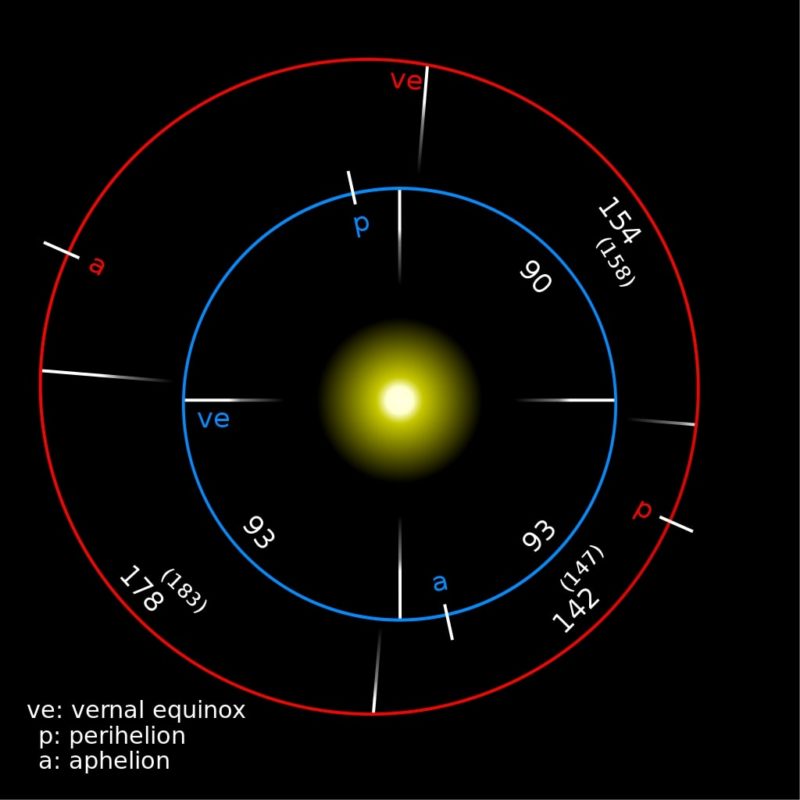

May 9: Mercury at greatest western elongation
Mercury will be at its highest point above the horizon in the morning sky, making it the best time to view the planet. Look for it low in the eastern sky just before sunrise.
It will be at apparent magnitude 0.4 in the constellation of Pisces. (Constellation map already displayed above, when discussing the close approach of the Moon and Neptune.) The Moon will not interfere as it will be only one day old, a very thin waxing crescent at 6%.
May 11: Messier 5 cluster at its highest point in the sky
Messier 5 (also known as M5, NGC 5904, or the Rose Cluster) is a globular star cluster located in the constellation of Serpens Caput. It was discovered by the German astronomer Gottfried Kirch in 1702 and later included in Charles Messier’s catalog of comet-like objects.
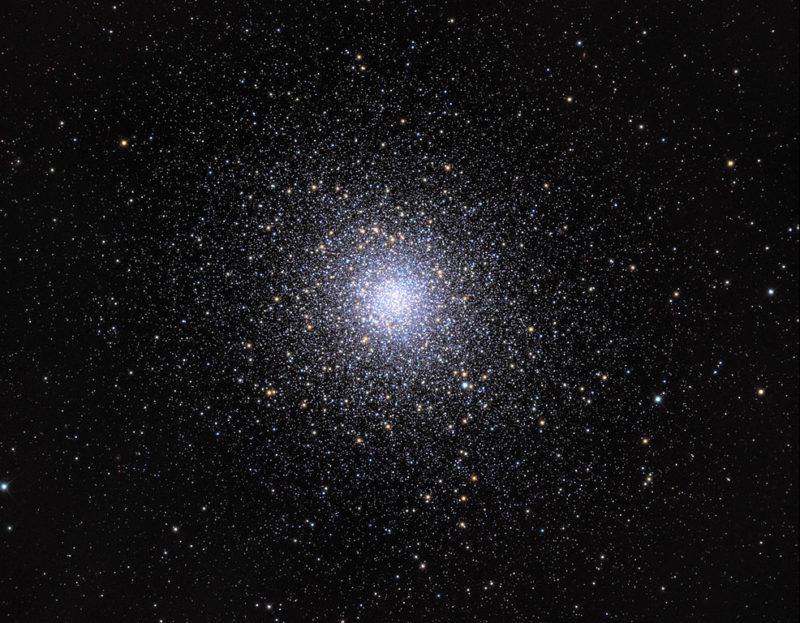

At apparent magnitude 5.7, M5 is easily visible with binoculars. The Moon will be a 3 days old waxing crescent at 21%.
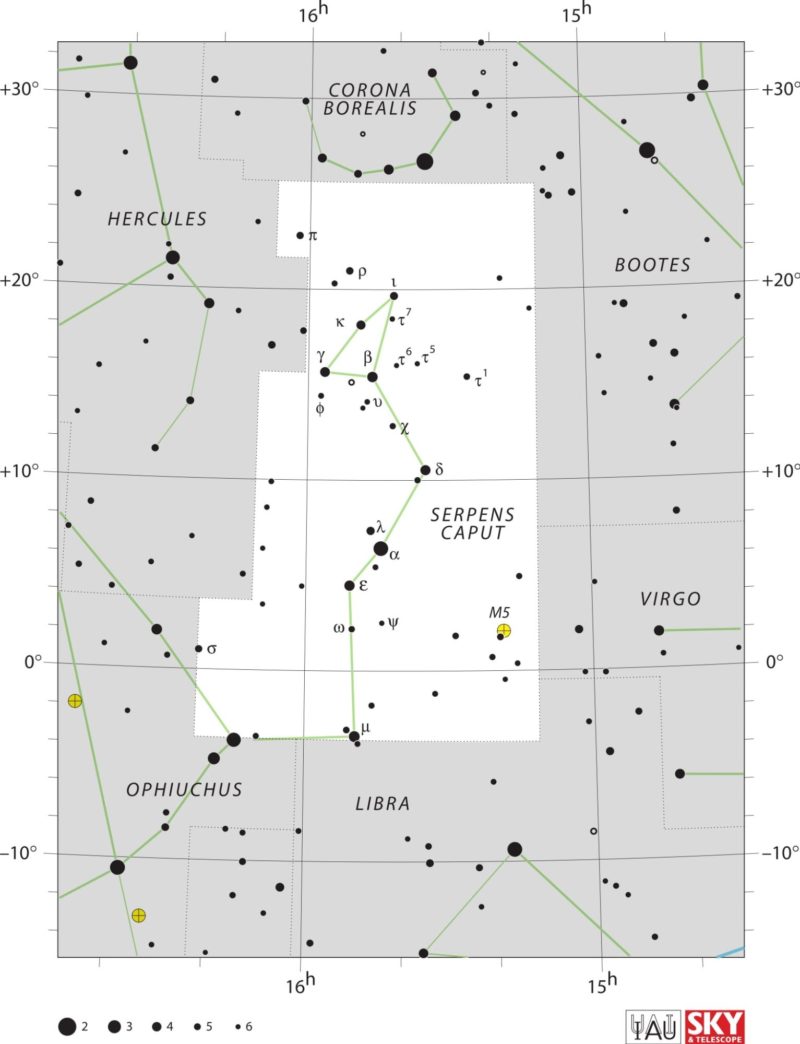

May 14: Conjunction of Mercury and Eris
Mercury and dwarf planet Eris (designated as 136199 Eris in the minor planets catalog) will be at conjunction by sharing the same right ascension and passing within 8°07′ of each other.
Mercury will be at apparent magnitude 0.2 of in the constellation of Pisces, while Eris will be at magnitude 18.7 in the neighboring constellation of Cetus. The Moon will be a 6 days old waxing crescent at 44% so it may interfere a little with observations, especially of very dim Eris which will require a large telescope.
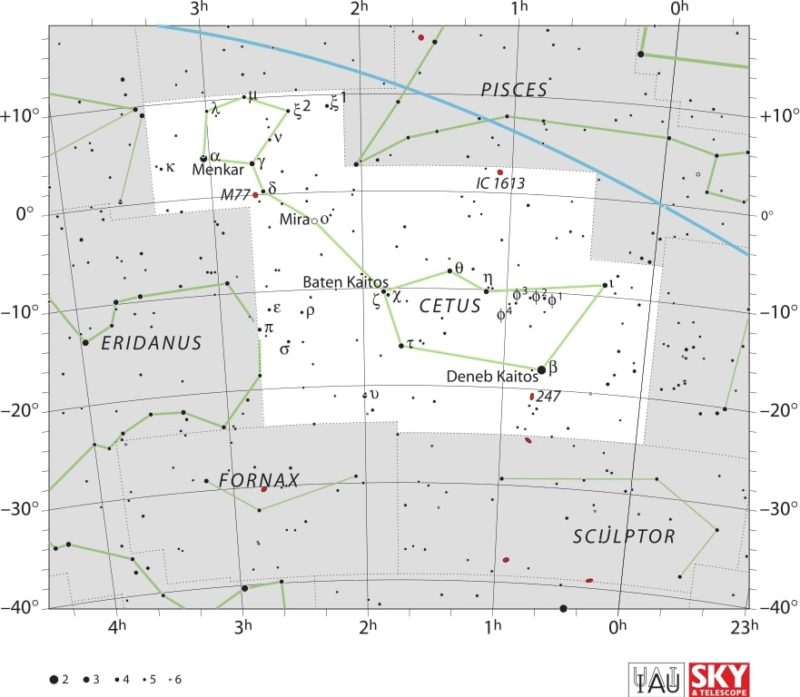

May 17: Asteroid 2 Pallas at opposition
Asteroid 2 Pallas will reach opposition, when it lies opposite to the Sun in the sky. It will reach the highest point in the sky around midnight local time.
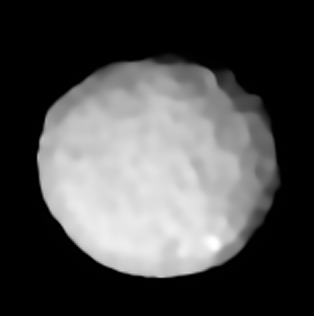

On this occasion, the asteroid Pallas will pass within 2.163 AU of Earth and reach a peak brightness of apparent magnitude 9.0. Unfortunately even at the peak, this asteroid will be too faint to observe with the naked eye. You will need at least a 4 inch telescope, which you should point towards the constellation of Hercules. The Moon will be 9 days old waxing gibbous at 71% so may interfere with observations somewhat.
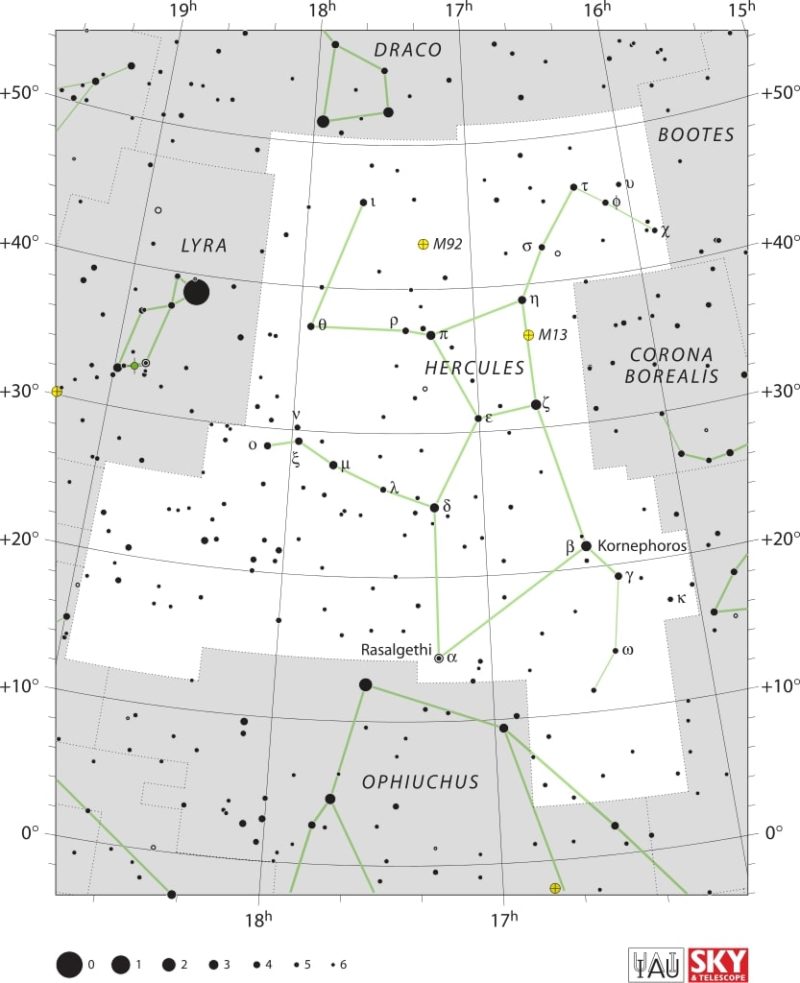

Pallas is a large asteroid of the main belt at mean diameter of 513 km. It is the third-largest asteroid in the whole Solar System by both mass and volume. It orbits the Sun at a semi-major axis of 2.77 AU. (Source: NASA JPL Small-Body Database Lookup for 2 Pallas.)
May 19: Comet 46P/Wirtanen at perihelion
The comet 46P/Wirtanen (see featured image at the top of the article) will reach perihelion, meaning it will reach the closest point in its orbit to the Sun at a distance of 1.05 AU. It will have an apparent magnitude of 10.5, so a telescope would be required to observe this small short-period comet. Look in the constellation of Taurus. The Moon will be 11 days old waxing gibbous at 87%.


May 28: Messier 4 at its highest point in the sky
Messier 4 (also known as M4, NGC 6121 or the Spider Globular Cluster) was discovered by Swiss astronomer Philippe Loys de Chéseaux in 1745 and cataloged by Charles Messier. It is located in the constellation of Scorpius, 6033 light-years away, making it the closest globular cluster to us.
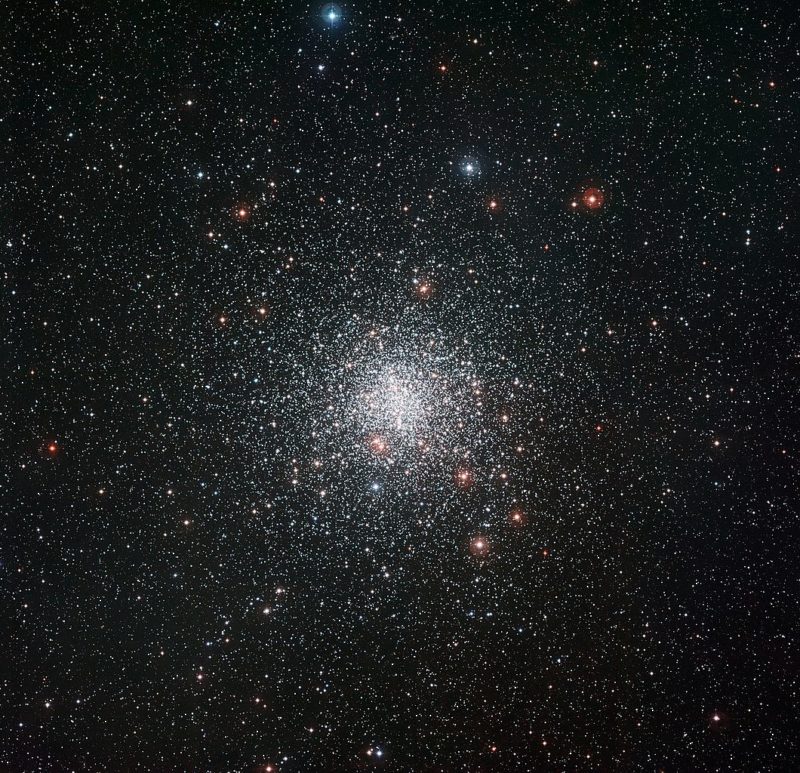

The cluster will reach its highest point in the sky at around midnight local time. It will reach apparent magnitude 5.4, which means you need at least a pair of binoculars or a small telescope. The Moon will be 20 days old waning gibbous at 64%.


May 31: Conjunction of Mercury and Uranus
Mercury and Uranus will be at conjunction by sharing the same right ascension and passing within 1°21′ of each other.
The two planets will meet in the constellation of Taurus with an apparent magnitude of -0.7 for Mercury and 5.9 for Uranus. (Constellation map already displayed above, when discussing comet 46P/Wirtanen at perihelion) The Moon will be a 23 days old waning crescent at 40%.
As Mercury is close to the Sun in the sky, be careful when observing this conjunction to never point binoculars or a telescope directly at the Sun. This can result in serious eye injuries or even permanent blindness.
May 31: Conjunction of the Moon and Saturn
The Moon and Saturn will reach conjunction passing within 22′ of each other while sharing the same right ascension.
At around the same time the two bodies will also make a close approach (appulse) reaching 20.2 arcminutes from each other, but not sharing the same right ascension. In some parts of the world this distance will be so close as to lead to a lunar occultation of Saturn, meaning the Moon will pass in front of Saturn thereby hiding it from view temporarily. If you’re in Argentina, Chile, southern Brazil and Uruguay, you’re in luck!
The Moon will be at apparent magnitude -11.8 and Saturn at magnitude 0.9 both in the constellation of Aquarius. (Constellation map already displayed above, when discussing the Conjunction of the Moon and Saturn.) The Moon will be a 23 days old waning crescent at 37%.
May 31: τ-Herculid meteor shower peak
The Tau Herculids will peak this May 2024 with a zenithal hourly rate of 10 meteors if stargazing conditions are optimal. Some meteors may also be spotted between May 25 and June 4.
When originally discovered in 1930, the meteors were radiating from the constellation of Hercules, near the star Tau Herculis. That has since changed. First the parent body of this meteor shower, comet 73P/Schwassmann–Wachmann, broke up into 69 known larger fragments in 1995. Then the meteor streams experienced orbital perturbations by Jupiter. Due to all this, the radiant point of this meteor shower has moved to near the star Arcturus in the constellation Boötes.
The meteors will move at the slow speed of 16 km/s on average. The Moon will be a 23 days old waning crescent at 37%.
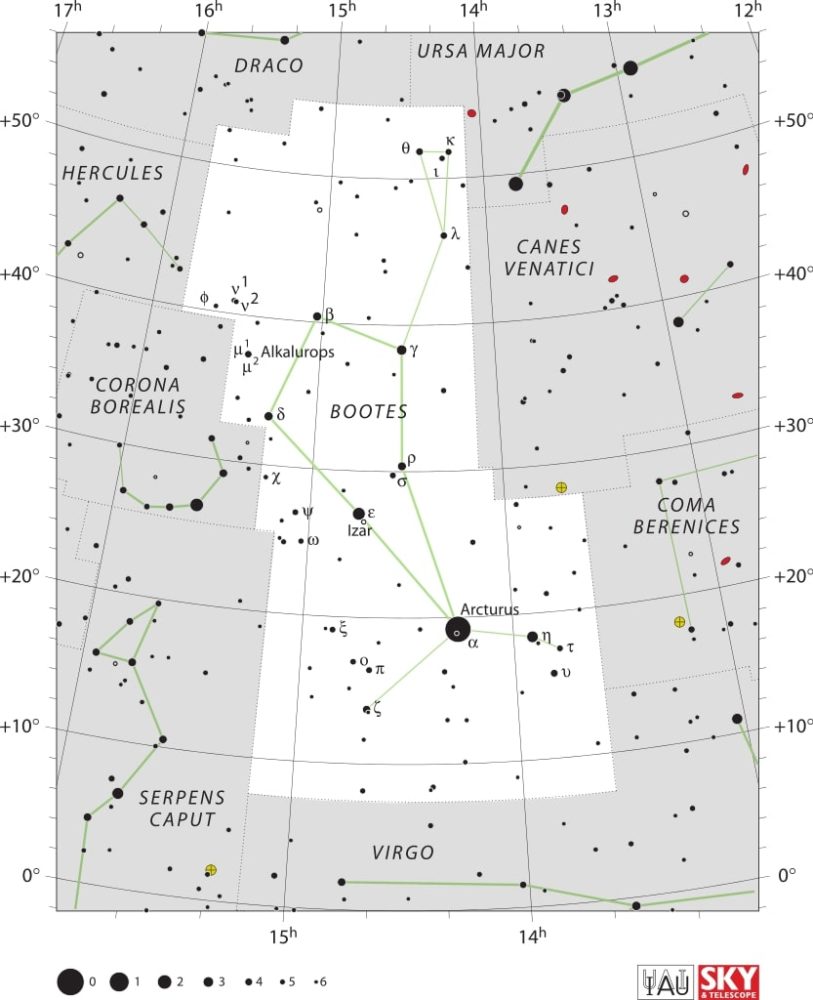

Moon Phases in May 2024
As you know, the Moon has a big impact on the visibility of celestial bodies and astronomical events in the night sky. So to help you with stargazing, here’s a calendar of the phases of Moon for this month of May 2024:
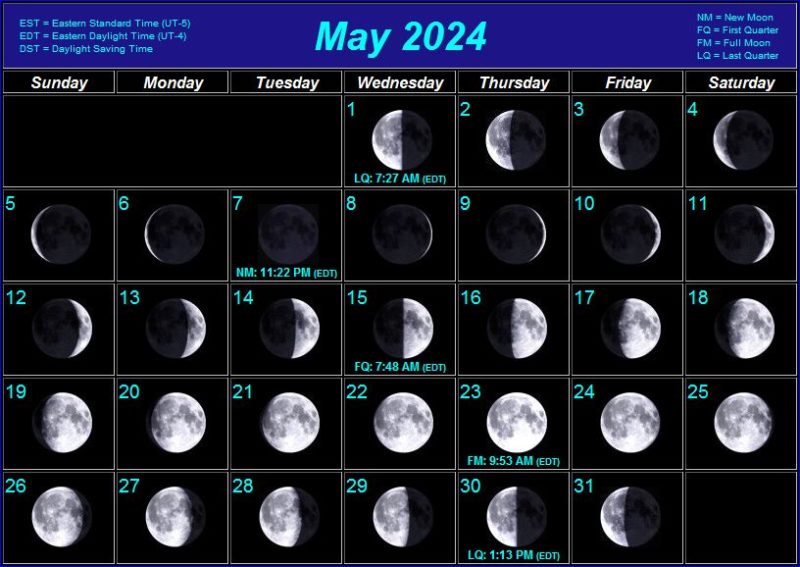

Positions of the Planets in May 2024
Mercury: The closest planet to the Sun can be seen at dawn and dusk travelling across the constellation of Pisces. This planet, being the closest to the Sun, will appear to move quickly in the night sky and its position will change in the following weeks.
Venus: The sister planet can be seen travelling across the constellation of Aries. Just like Mercury, Venus can only be seen at dawn and dusk.
Mars: The red planet can be seen in the constellation of Pisces.
Jupiter: The gas giant is visible in the constellation of Taurus. Jupiter can easily be spotted with the naked eye, even in highly illuminated cities.
Saturn: The ringed giant can be seen with the naked eye in the constellation of Aquarius.
Uranus: The ice giant can be seen in the constellation of Aries with the use of a telescope.
Neptune: The blue giant requires a telescope pointed in the constellation of Pisces in order to be seen.
Positions of Dwarf Planets and Large Asteroids in May 2024
Ceres: The asteroid belt’s lone dwarf planet can be seen in the constellation of Sagittarius with the help of a telescope.
Vesta: This large asteroid can be seen in the constellation of Gemini with a telescope.
Pallas: The asteroid can be observed with a telescope in the constellation of Hercules.
Pluto: This distant dwarf planet can be found in the constellation of Capricornus with the help of a large telescope.
Major astronomical events next month – June 2024
- June 3: Asteroid 43 Ariadne at opposition.
- June 7: Daytime Arietid meteor shower peak.
- June 11: Comet 154P/Brewington at perihelion.
- June 20: June solstice.
- June 27: June Bootid meteor shower peak.
- June 28: Asteroid 42 Isis at opposition.
- June 30: Comet 13P/Olbers at perihelion.
Conclusion
May 2024 presents a celestial extravaganza with a diverse array of meteor showers, planetary conjunctions, and stargazing events. From the opposition of asteroid 2 Pallas to the perihelion passage of Comet 46P/Wirtanen, stargazers have ample opportunities to witness the beauty of the cosmos.
So, mark your calendars and don’t forget to subscribe to our newsletter below to receive our stargazing calendar in your mailbox. Happy stargazing!
Sources:
See also: